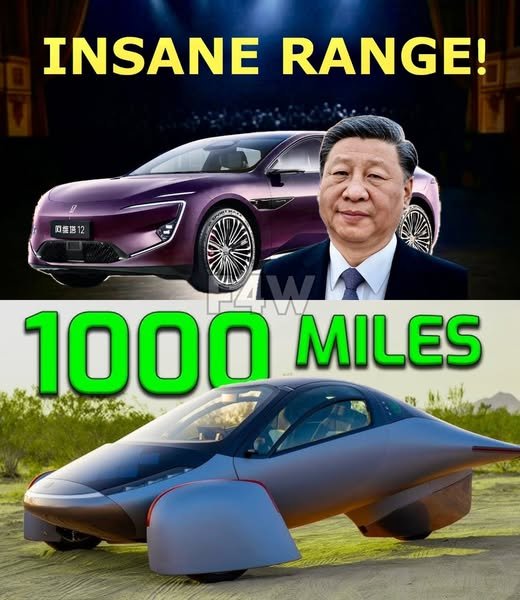The electric vehicle (EV) market is no stranger to bold claims, but the recent unveiling of the 2025 Changan Huawei AVATR 12 REV has sent shockwaves through the industry. Promising an astonishing 717 miles (1155 kilometers) on a single charge for under $38,000, this new EV challenges everything we thought possible about range, affordability, and smart technology integration. But can it really deliver on these promises? Or is this just another overhyped concept destined to fall short? Let’s dive deep into what makes the AVATR 12 REV a potential revolution—and why skeptics are raising eyebrows.
A New Benchmark in EV Range and Affordability?
One of the most talked-about features of the AVATR 12 REV is its jaw-dropping range. At 717 miles per charge, it far surpasses the current industry leaders like Tesla’s Model S Plaid, which offers around 400 miles. If true, this would effectively eliminate “range anxiety,” the persistent fear among EV buyers of running out of battery on long journeys. Moreover, the price point—under $38,000—is remarkably competitive, especially given that most EVs with comparable range tend to cost well over $60,000.
This combination of affordability and range could democratize electric mobility, making long-distance EV travel accessible to a much broader audience. For many consumers, this could be the tipping point to switch from gasoline cars to electric, accelerating the global transition to sustainable transportation.
Cutting-Edge Technology: HarmonyOS and ADS 3.0
The AVATR 12 REV isn’t just about range and price. It integrates Huawei’s HarmonyOS, a smart operating system designed to create a seamless, connected driving experience. This means the car functions more like a smart device than a traditional vehicle, offering real-time updates, AI-powered navigation, and personalized settings that adapt to the driver’s habits.
Complementing this is the advanced driver assistance system, ADS 3.0, which promises enhanced safety and semi-autonomous driving capabilities. This technology could reduce accidents, improve traffic flow, and pave the way for fully autonomous vehicles in the near future.
The Range-Extender System: Innovation or Compromise?
A key to the AVATR 12 REV’s impressive range is its range-extender system—a small onboard generator that can recharge the battery while driving. This hybrid approach blurs the line between pure electric vehicles and traditional hybrids, promising longer trips without the need for frequent charging stops.
However, this raises controversial questions. Purists argue that a range-extender, often powered by gasoline or other fossil fuels, undermines the environmental benefits of a fully electric vehicle. Critics worry that this compromises the AVATR 12 REV’s green credentials, potentially increasing emissions and perpetuating reliance on fossil fuels.
On the other hand, supporters claim this pragmatic solution addresses current infrastructure limitations, making EVs more practical for everyday use, especially in regions where charging networks remain sparse. It could be a transitional technology bridging the gap until battery technology and charging infrastructure catch up.
Skepticism and Industry Implications
Despite the excitement, some experts urge caution. Achieving a 717-mile range at such a low price challenges current battery technology limits and manufacturing economics. Skeptics question whether the AVATR 12 REV’s claims are based on idealized testing conditions rather than real-world driving scenarios.
Furthermore, the integration of Huawei’s technology raises geopolitical concerns, particularly in Western markets wary of Chinese tech dominance. Will regulatory hurdles or security concerns limit the car’s global reach?
If the AVATR 12 REV lives up to its promises, it could disrupt the EV market profoundly, forcing established players like Tesla, Volkswagen, and Ford to rethink their strategies. It could also accelerate EV adoption in developing markets where affordability is key.
Conclusion: Revolution or Hype?
The 2025 Changan Huawei AVATR 12 REV is undeniably one of the most exciting and controversial EV announcements in recent memory. Its promise of 717 miles on a single charge for under $38,000, combined with smart technology and a range-extender system, could redefine what consumers expect from electric vehicles.
Yet, the project’s ambitious claims invite skepticism about feasibility, environmental impact, and geopolitical implications. Is this the ultimate solution to range anxiety, or just a tantalizing mirage? Only time and rigorous real-world testing will tell.
For now, the AVATR 12 REV challenges the EV industry to push boundaries and sparks a vital debate about the future of sustainable mobility. One thing is certain: the race for the perfect electric vehicle just got a lot more interesting.



